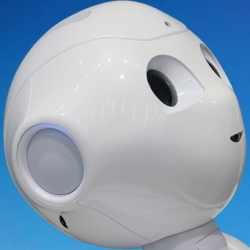
Potentially more than half of workers in five Southeast Asian countries are at high risk of losing their jobs to automation in the next two decades, an International Labour Organisation (ILO) study found. New technology will make those in the garments industry particularly vulnerable.
the International Labour Organization (ILO) conducted more than 330 interviews, 4,000 enterprise surveys and 2,700 student surveys across Asia, as well as extensive secondary research to better understand how disruptive technologies may reshape the landscape of labour in the region.
Fifty six percent of the salaried workforce from Cambodia, Indonesia, the Philippines, Thailand and Vietnam, about 137 million workers, fall under the high-risk category, the study showed.
"Countries that compete on low-wage labour need to reposition themselves. Price advantage is no longer enough," said Deborah France-Massin, director for the ILO’s bureau for employers’ activities. The report said workers have to be trained to work effectively alongside computers and robots.
Southeast Asia is home to more than 630 million people and is a hub for several manufacturing sectors, including textiles, vehicles and hard disk drives.
Of the nine million people working in the region’s textiles, clothing and footwear industry, 64 per cent of Indonesian workers are at high risk of losing their jobs to automation, 86 per cent in Vietnam, and 88 per cent in Cambodia.
Garment manufacturers in Cambodia, who take orders from retailers such as Adidas, Marks and Spencer and Walmart Stores Inc, employ about 600,000 people.
ietnam is also witnessing record investment in its footwear and textiles industries, due to new free-trade pacts with major markets, including the US-led Trans-Pacific Partnership. It is the second-largest garment supplier behind China to the United States.
The United Nations agency said technologies including 3D printing, wearable technology, nanotechnology and robotic automation could disrupt the sector. "Robots are becoming better at assembly, cheaper and increasingly able to collaborate with people," the ILO said.
The textiles, clothing and footwear (TCF) sector is at the highest risk of automation out of five industries analyzed in the study, including automotive and auto parts, electrical and electronics, business process outsourcing and retail.
In the automotive and auto parts industry, more than 60 per cent of salaried workers in Indonesia, and over 70 per cent of those in Thailand face the risk of their jobs being displaced.
Southeast Asia’s automotive sector, the seventh-largest producer of vehicles in 2015 globally, employs more than 800,000 workers, the report said.
Thailand, known as the "Detroit of Southeast Asia", is a regional production and export hub for the world’s top car makers. The auto sector accounts for around 10 per cent of Thai GDP and employs a 10th of its workers in manufacturing.
The report concludes:
Across all the sectors examined in this paper, technological advancements and innovations are challenging the existing order. Jobs, particularly in low-skilled, labour-intensive sectors, will be displaced by technology and global supply chains may start experiencing a period of flux as production relocates closer to purchasing markets. We are also witnessing the emergence of new markets, new jobs and even new sectors that mostly require higher levels of skills.
